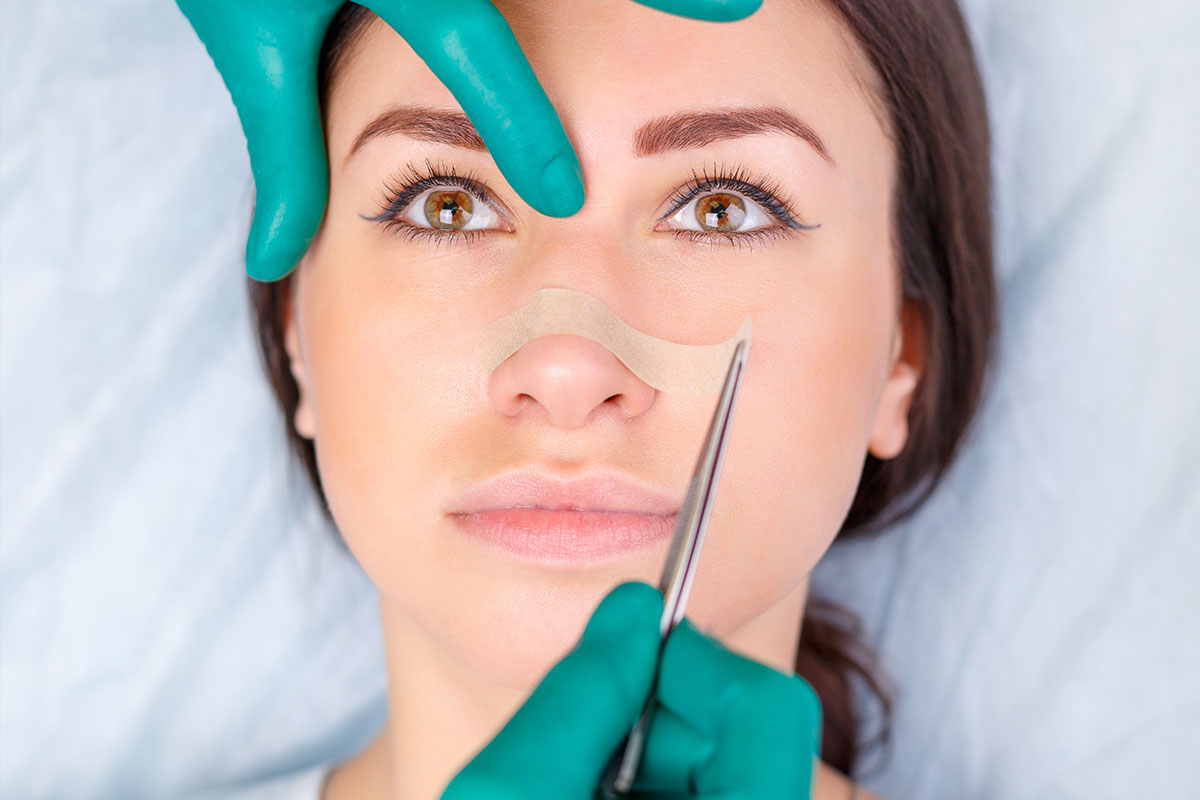Undergoing rhinoplasty surgery in Riyadh is a significant step towards achieving your desired nasal aesthetics or functional improvements. However, the journey doesn't end in the operating room. The healing process that follows is crucial for the final outcome and requires patience, diligence, and adherence to your surgeon's instructions. Understanding what to expect during each stage of recovery will help you navigate this period with greater ease and confidence.

The Immediate Post-Operative Period (First Few Days):
Immediately after surgery in the recovery room, you will likely feel groggy from the anesthesia. Your nose will be splinted or casted to provide support and protection. Nasal packing might be in place to minimize bleeding. Expect significant swelling and bruising around your nose and eyes, which can extend to your cheeks. You will likely experience discomfort or pain, which can be managed with prescribed pain medication. It's crucial to keep your head elevated at all times, even while sleeping, to help reduce swelling. Applying cold compresses gently to your cheeks and around your eyes (avoiding direct pressure on the nose) can also help minimize bruising and swelling. You will need someone to drive you home and assist you for the first 24-48 hours.
The First Week:
This is often the period of the most noticeable swelling and bruising. While the intensity will gradually decrease each day, you will still experience significant discoloration and puffiness. You will have a follow-up appointment with your surgeon, typically within the first week, to remove any nasal packing and potentially some external sutures. The splint or cast will usually remain in place for about a week to provide support and maintain the new nasal shape. It's crucial to avoid any activities that could bump or disturb your nose. Gentle movement is permitted, but strenuous exercise, heavy lifting, and bending over should be strictly avoided. You should also refrain from blowing your nose. If you need to sneeze, do so with your mouth open to minimize pressure on your healing nose.
Weeks 2-4:
During this phase, you will observe a significant improvement in the swelling and bruising. While some residual swelling will persist, the more dramatic discoloration should fade considerably. You may start to see the initial refinements in your nasal shape. If non-dissolvable external sutures were used, they will typically be removed during a follow-up appointment. You might be able to return to light activities and work, depending on the nature of your job and your surgeon's recommendations. However, it's still essential to avoid strenuous exercise and any activities that could risk trauma to your nose. Nasal stuffiness is common as the internal tissues continue to heal; saline nasal sprays can help keep the nasal passages moist and comfortable.
Months 1-3:
The majority of the visible swelling will subside during the first few months. However, subtle swelling, particularly in the nasal tip, can persist for a longer duration. You will start to see the more defined contours of your new nose. You can gradually resume more strenuous activities as advised by your surgeon. It's still important to protect your nose from any potential injury. You might experience some numbness or altered sensation in the tip of your nose, which is normal and usually improves over time as the nerves regenerate. Follow-up appointments with your surgeon will continue during this period to monitor your healing progress and address any concerns.
Months 3-12 and Beyond:
This is the final stage of the healing process, where the subtle residual swelling gradually resolves, and the final refined shape of your nose becomes more apparent. The nasal tissues continue to settle and adapt. The tip of the nose, in particular, can take the longest to fully refine. Any numbness or altered sensation should continue to improve. Your surgeon will schedule final follow-up appointments to assess the ultimate outcome. It's essential to be patient during this time, as the complete results of your rhinoplasty may not be fully evident for up to a year or even longer in some cases. Protecting your nose from significant trauma remains important even after the initial healing period.
Important Considerations for Healing in Riyadh:
The climate in Riyadh, with its potential for high temperatures and dryness, might necessitate extra attention to hydration and sun protection during your recovery. Ensure you stay well-hydrated by drinking plenty of water. Protect your healing nose from direct sun exposure by wearing a wide-brimmed hat when outdoors, especially during the initial months when the skin is more sensitive.
Factors Influencing Healing:
Several factors can influence the speed and quality of your healing process, including:
- Your individual healing capacity: Everyone heals at a different rate.
- The extent of the surgery: More complex procedures may require a longer healing period.
- Adherence to post-operative instructions: Following your surgeon's guidelines diligently is crucial.
- Your overall health and lifestyle: Factors like smoking can significantly impede healing.
Patience and Communication:
Patience is key throughout the rhinoplasty healing process. It's a gradual journey, and it's essential to allow your body the time it needs to heal fully. Maintain open communication with your surgeon throughout your recovery. Don't hesitate to reach out if you have any questions or concerns. They are your best resource for guidance and support during this time.
By understanding the different stages of the healing process after rhinoplasty in Riyadh and following your surgeon's instructions carefully, you can contribute significantly to a smooth and successful recovery, ultimately achieving the aesthetic and functional results you desire.

